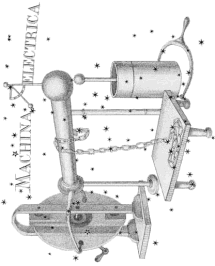Recently finished reading Deep Space Propulsion - A Roadmap to Interstellar Flight by Kelvin F. Long, 2012. A book review has already been written here so won't duplicate however will comment on a few points made in this excellent introductory text. A rundown of current known propulsion schemes is given outlining their pros and cons for interstellar flight ranging from electric and nuclear based propulsion, solar sails, beamed power, nuclear fusion and external nuclear pulse propulsion, antimatter etc. Projects Daedalus and Icarus are also mentioned.
Some interesting points I picked up while reading the book:
Seven key motivations for interstellar travel are given:
Seven key motivations for interstellar travel are given:
Continued survival ie the ability of humans to survive on another planet would greatly increase our prospects for long term survival and also makes the point that while some suggest we should be focusing inwards on our problems on Earth and remain home the author's reply to this is "These attitudes will only lead to one result: stagnation and regression of the human race" which I agree with. If one looks back in history some of those nations that went to the trouble of building ships to explore new worlds are fairly well off financially and increased our knowledge base (scientifically and culturally).
Balance of resources given the rate of population growth there will be a breaking point as far as the need for resources to sustain the future population unless more resources outside earth are found. When a nation runs out of critical resources they either buy more, take it by force or perish.
Economic opportunities ie plenty of money to be made by mining asteroids etc. Very rare minerals/metals required for certain key technologies on Earth may be in abundance in other places in our solar system.
Quest for knowledge ie Are we alone for eg? How many Earth like planets are there within 50 ly from Earth for eg? Astronomy / AstroPhysics / Universe etc
Spreading of life
Freedom factor
Starstuff driver ie the atoms in our bodies were made in stars and the author hints that we have a longing to return to what created us.
Another interesting point made by the author: "Any material that is launched into Earth orbit will cost typically around $50000 / Kg." This needs to be reduced substantially for any large scale space exploration. The current alternatives to chemical rockets are:
The space elevator: feasible however the technology to mass fabricate the Earth to Orbit cable using high strength carbon nano-tubes is not in place (steel wire cable won't do the job).
Project Orion: (external nuclear pulse propulsion): the energy release from nuclear reactions is of the order a million times greater than that from a typical chemical reaction making this vehicle a feasible alternative to chemical rockets. However detonating nuclear bombs in earth's atmosphere to get the vehicle off the ground leaving a radioactive trail behind isn't a good idea.
Skylon Project: although this proposed spaceplane still would use a liquid oxygen/hydrogen rocket to reach orbit it is worth a mention because this is a step in the right direction as far as reducing the cost of getting hardware into orbit is concerned however not the breakthrough solution I am after (ie an elegant non-chemical propulsion solution).
All in all a good introductory text worth a read, has nice colour pages of the various designs talked about in the book.





















































